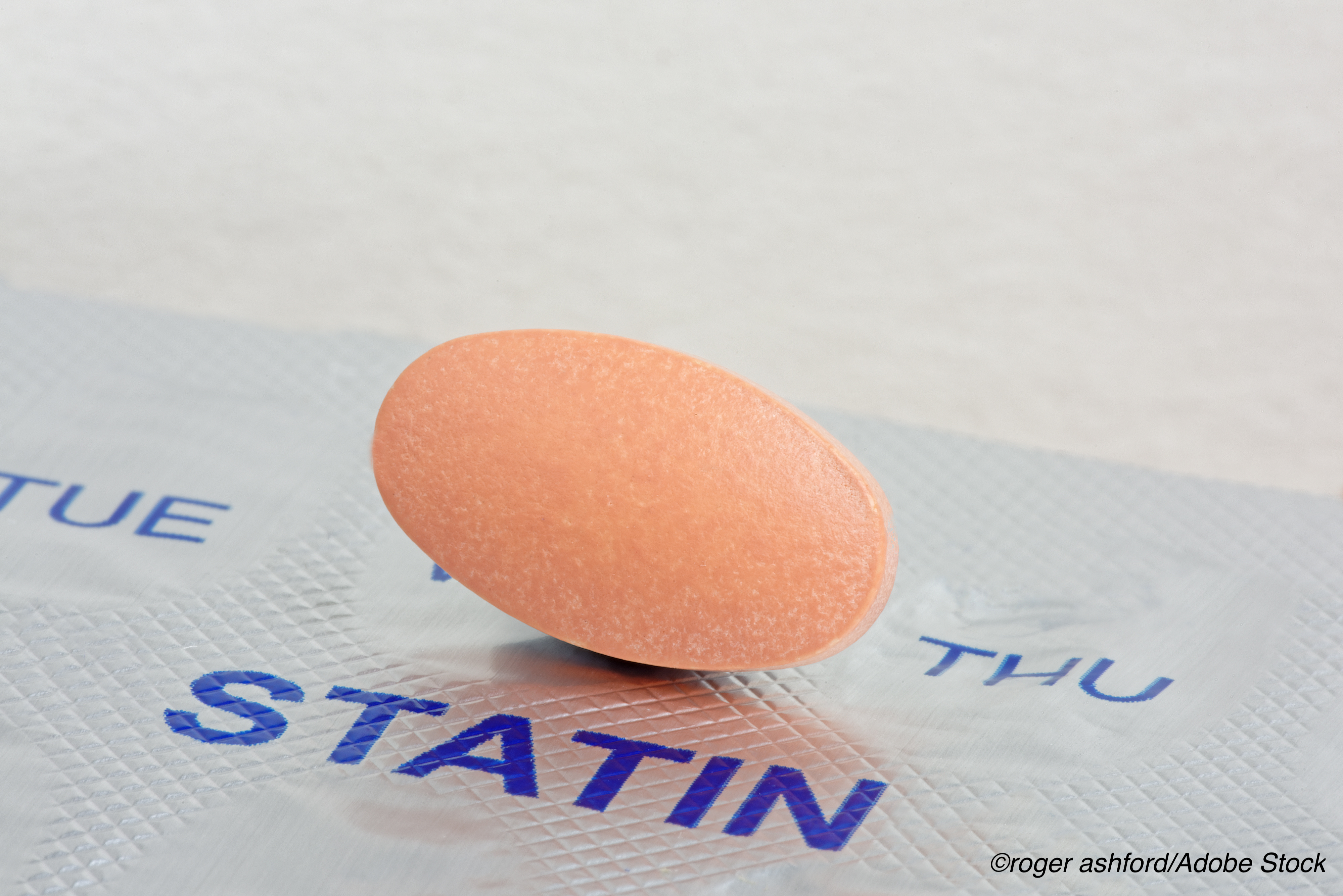
Statin use at the time of intra-abdominal surgery may reduce the risk of postoperative adhesion-related complications (ARCs) — including small-bowel obstructions (SBO), the need for adhesiolysis, and even infertility secondary to adhesions — according to results from a recent study published in JAMA Network Open.
“More than 90% of patients develop adhesions after intra-abdominal surgery. Adhesion-related complications (ARCs) occur in up to 5% of patients undergoing these operations and are responsible for significant morbidity and mortality. More than 70% of small-bowel obstructions (SBOs) and 40% of cases of infertility are secondary to adhesions. Future operations in patients with adhesions are associated with inadvertent enterotomy rates of 10% to 20%, resulting in an estimated mortality of 13%,” according to lead author Frank I. Scott, MD, MSCE, of the University of Colorado, Denver, and fellow researchers.
They added that because profibrotic cytokines promote the formation of ARCs, the key to reducing ARCs may be profibrotic cytokine inhibition.
“Statins directly influence adhesion-related cytokines in vitro and in murine models through inhibiting farnesyl pyrophosphate and geranylgeranyl pyrophosphate formation,” they explained, adding that statins also directly modulate profibrotic cytokines.
But because this association has only been studied in animal models, rather than in humans, Scott and colleagues conducted two retrospective studies — The Health Improvement Network (THIN) and Optum’s Clinformatics Data Mart (Optum) trials — in which they assessed outcomes in adults treated with statins compared with those who were not at the time of intra-abdominal surgery.
They included 148,601 patients (mean age: 49.6 years; 70.1% female) in the THIN trial and 1,188,217 (mean age at time of surgery: 48.2 years; 72.6%) in the Optum trial. At the time of surgery, 11.7% of patients were being treated with statin therapy, with a median duration of perioperative use of 3.7 years. In addition, 2.3% had previously been treated with a statin but had discontinued treatment before surgery. Among these two sets of patients, respectively, 1.4% and 4.6% experienced an ARC.
Scott and colleagues found that statin use at the time of surgery was associated with a decrease in the risk of postoperative ARCs (HR: 085; 95% CI: 0.74-0.99). The associations between statin use and small-bowel obstruction were similar (THIN: adjusted HR [aHR]: 0.80; 95% CI: 0.70-0.92 and Optum: aHR: 0.88; 95% CI: 0.85-0.91).
In the THIN cohort, increased risk of ARC was associated with increasing age (HR in patients aged >65 years: 2.34; 95% CI: 2.07-2.66), bowel surgery (HR: 2.16; 95% CI: 1.97-2.38), and a history of malignant tumors (HR: 1.81; 95% CI: 1.62-2.03). Researchers found no associations between an increased risk of ARC and sex, diabetes, hyperlipidemia, or obesity.
In the Optum cohort, 10.8% of patients were using stains at the time of surgery, and 0.4%, fibrates. Statin use at the time of surgery was associated with a decreased risk of ARCs (HR: 0.92; 95% CI: 0.90-0.95). In these patients, diseases that affect the microvasculature were associated with an increased risk of ARCs, as were other factors, including the following:
- Hypertension (HR: 1.21; 95% CI: 1.19-1.24).
- Diabetes (HR: 1.17; 95% CI: 1.14-1.20).
- Obesity (HR: 1.28; 95% CI: 1.25-1.31).
- Bowel operations (HR: 1.87; 95% CI: 1.83-1.91).
- History of malignant tumors (HR: 1.82; 95% CI: 1.78-1.86).
- Tobacco use (HR: 1.31; 95% CI: 1.27-1.34).
- Advanced age (aged >65 years: HR: 1.37; 95% CI: 1.34-1.41).
According to results from the THIN study, former statin use was not associated with a risk of ARCs (HR: 1.14; 95% CI: 0.86-1.53), but concurrent use was (HR: 0.84; 95% CI: 0.72-0.97). Results in the Optum study were similar. In addition, the use of statins was associated with a reduced risk of SBOs (THIN: HR: 080; 95% CI: 0.70-0.92 and Optum: HR: 0.88; 95% CI: 0.85-0.91).
The use of angiotensin-converting enzyme inhibitors (ACEIs) or angiotensin receptor blockers (ARBs)—alternative antihypertensives with known antifibrotic effects—had no associations with the risk of ARCs.
Scott and colleagues also assessed whether treatment effects were associated with lipid lowering but found that fibrate use was not associated with the risk of ARCs in either study. The use of statins that effected a less than 30% reduction in LDL-C were not associated with ARC risk reduction (HR: 0.95; 95% CI: 0.68-1.32), which differed greatly from the significant association researchers found between ARC risk reductions and statins with a 30%-50% LDL-C lowering capability (HR: 0.78; 95% CI: 0.67-0.91) and those with greater than 50% LDL-C lowering capabilities (HR: 0.77; 95% CI: 0.52-1.14).
These results are promising, but Scott and colleagues called for further randomized, clinical trials to explore and confirm their findings. In an accompanying editorial, Sue Fu, MD, and fellow authors from Stanford University School of Medicine, Stanford, California, agreed, and highlighted the significant toll such complications take on the entire healthcare system.
“Adhesions and their subsequent complications pose a significant burden on health care resources, accounting for nearly 1 million inpatient days and $2.3 billion in costs in a single year. It is clear why adhesion prevention remains of high interest to all surgeons who operate in the abdomen and pelvis. The study by Scott et al suggests that statins could provide an auspicious solution to ARCs; however, randomized clinical trials are needed to determine which patient populations are likely to receive maximum benefit from statins in this setting as well as the optimal dosing and duration of therapy,” they wrote.
“Additionally, while statins are inexpensive and well tolerated, it is important to assess the cost-effectiveness of statins and financial implications for patients. In the setting of adhesive SBOs, patients receiving statin therapy were more likely to be successfully treated nonoperatively, suggesting potential cost and outcome benefits to patients and insurers. Keeping this in mind, the work by Scott and colleagues affirms that statins are a promising avenue for reducing the risk of ARCs and lays the groundwork for future clinical trials to further validate these findings,” concluded Fu et al.
Study limitations include its retrospective nature, the possibility of misclassification bias, and residual confounding from unmeasurable factors of statins use and its association with ARCs.
-
In two retrospective studies of over 1.3 million individuals, researchers found that statin use at the time of intra-abdominal surgery was significantly associated with an 8%-19% reduction in adhesion-related complications after surgery.
-
Statin use at the time of intra-abdominal surgery also effected a 12%-20% reduction in postoperative small bowel obstructions.
Liz Meszaros, Contributing Writer, BreakingMED™
This study was supported by the National Institute of Diabetes and Digestive and Kidney Diseases (NIDDK) and the National Cancer Institute.
Scott has received grants from the NIDDK, Janssen Pharmaceuticals, Takeda Pharmaceuticals, and Crohn’s and Colitis Foundation; and personal fees from PRIME Inc., Janssen Pharmaceuticals, Takeda Pharmaceuticals, and Merck Pharmaceuticals outside the submitted work.
Fu reported no conflicts of interest.
Cat ID: 159
Topic ID: 97,159,730,188,192,925,159


